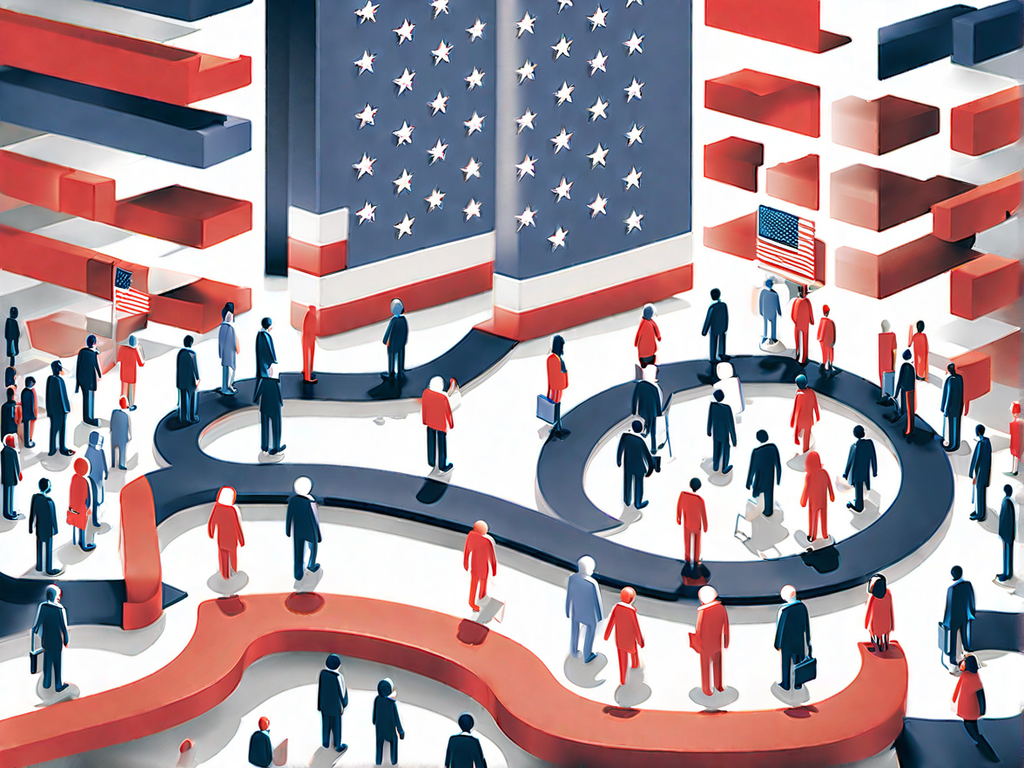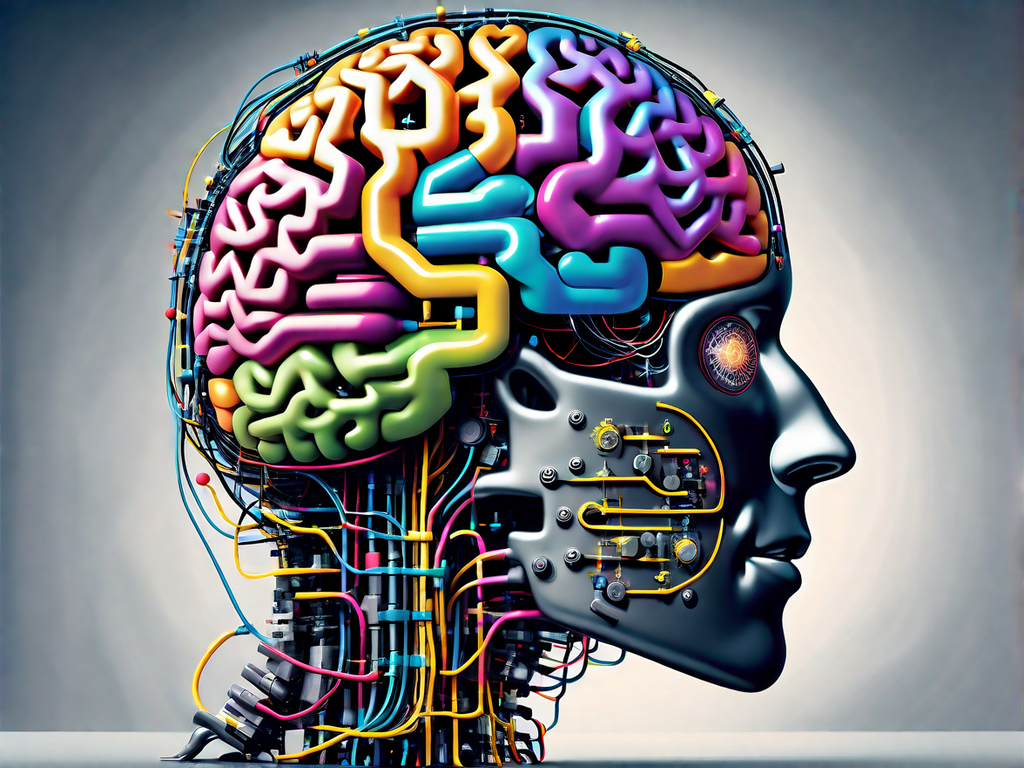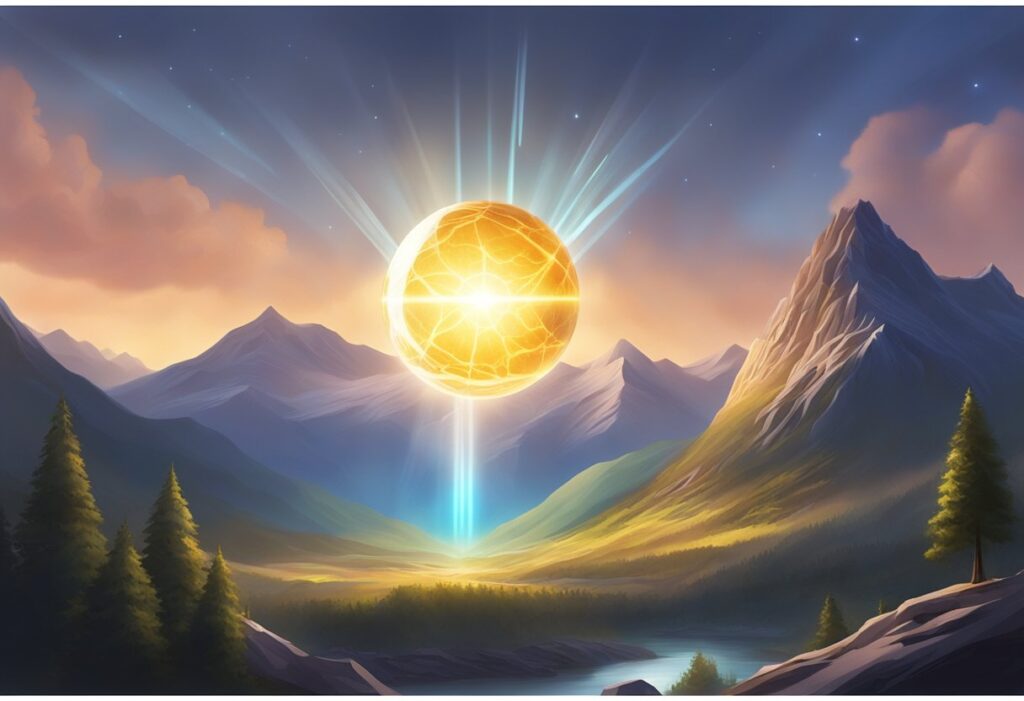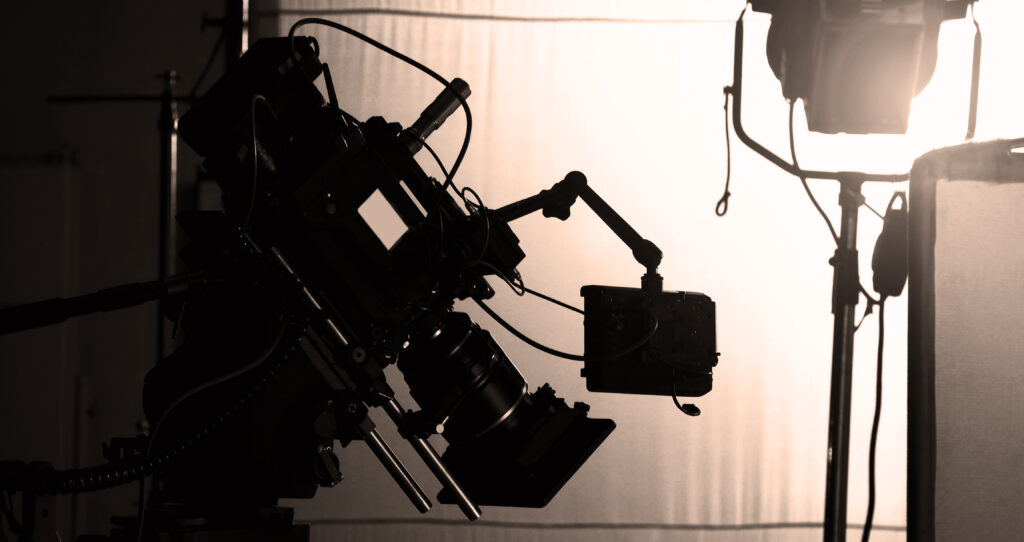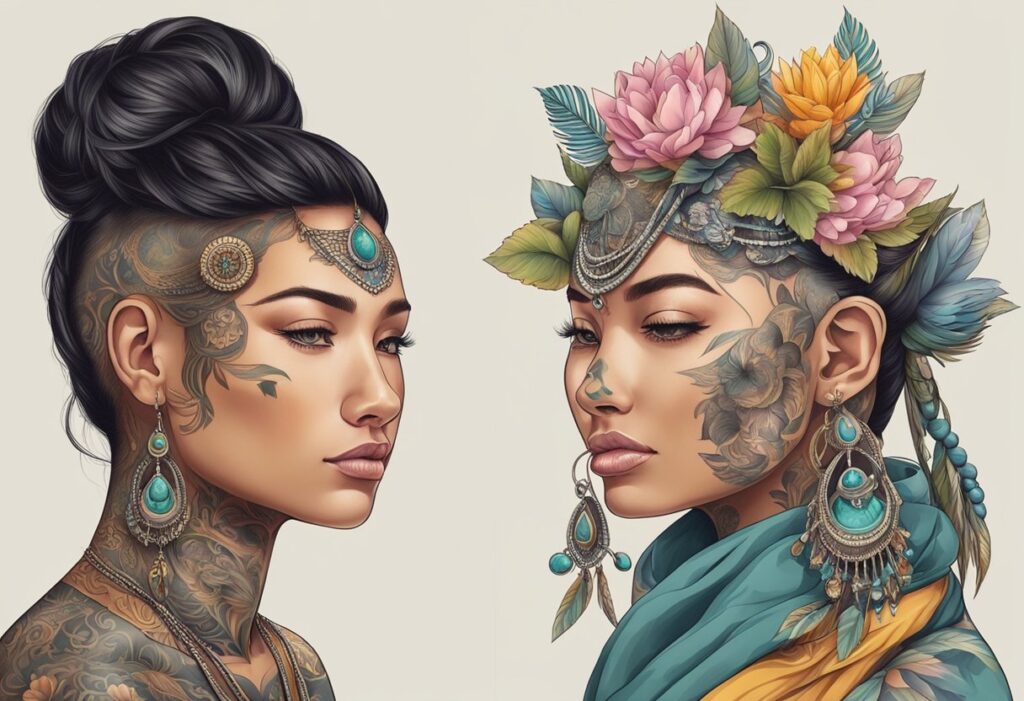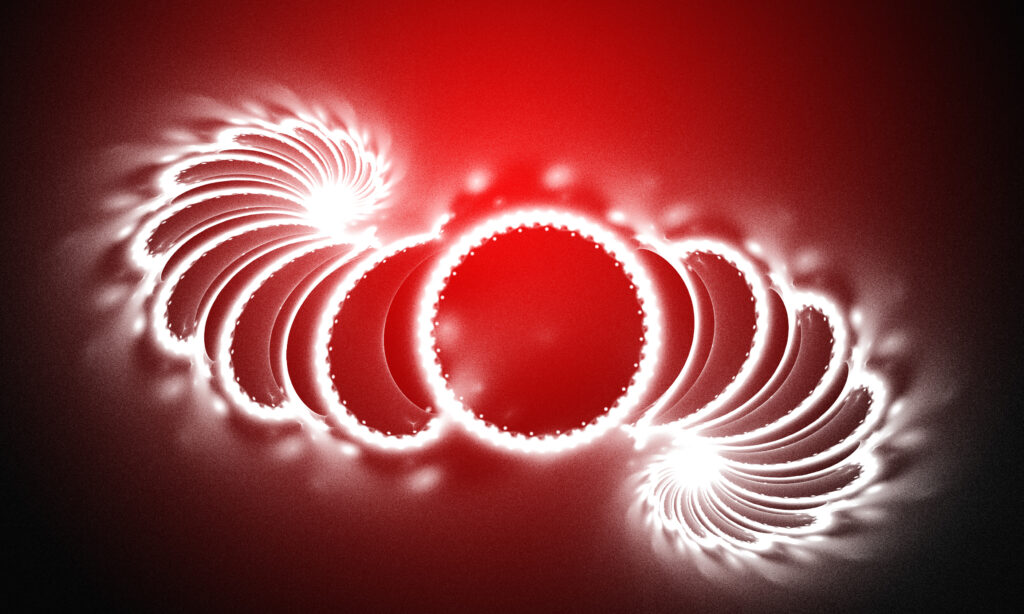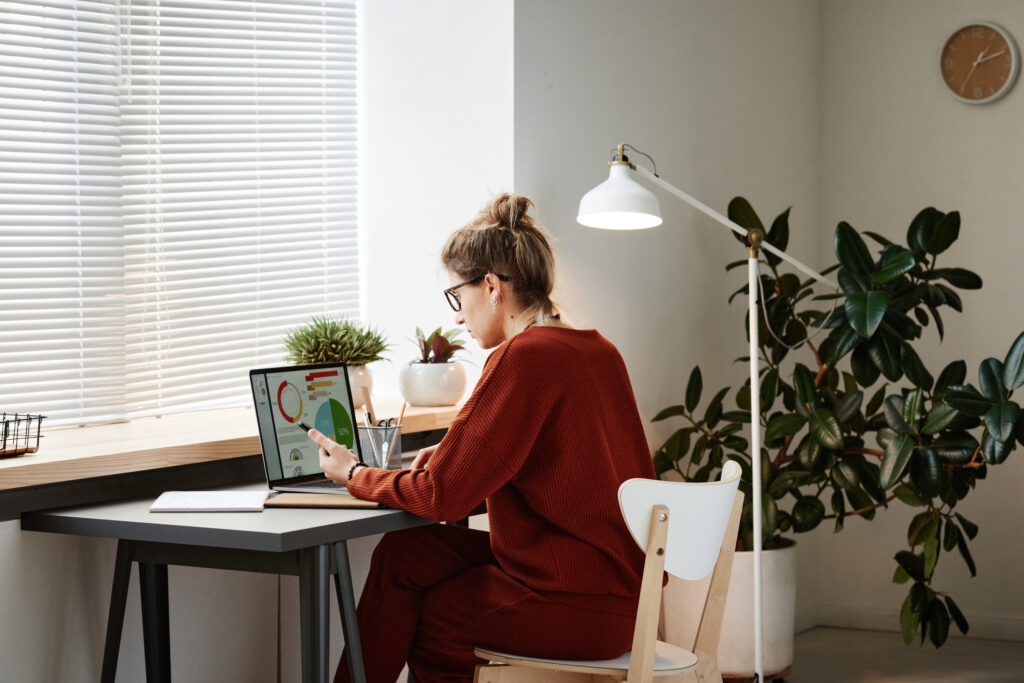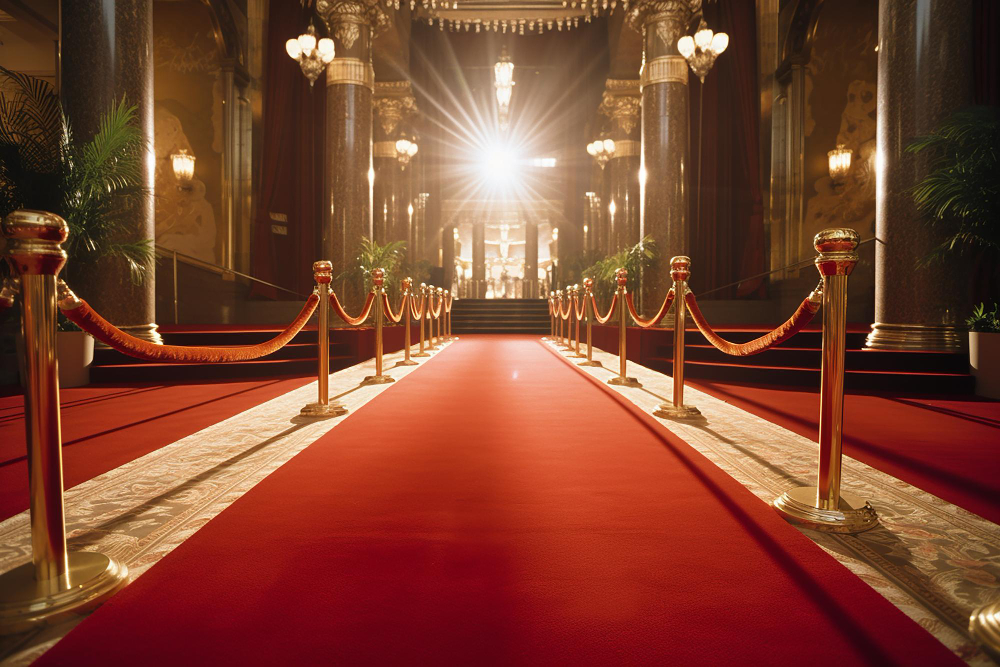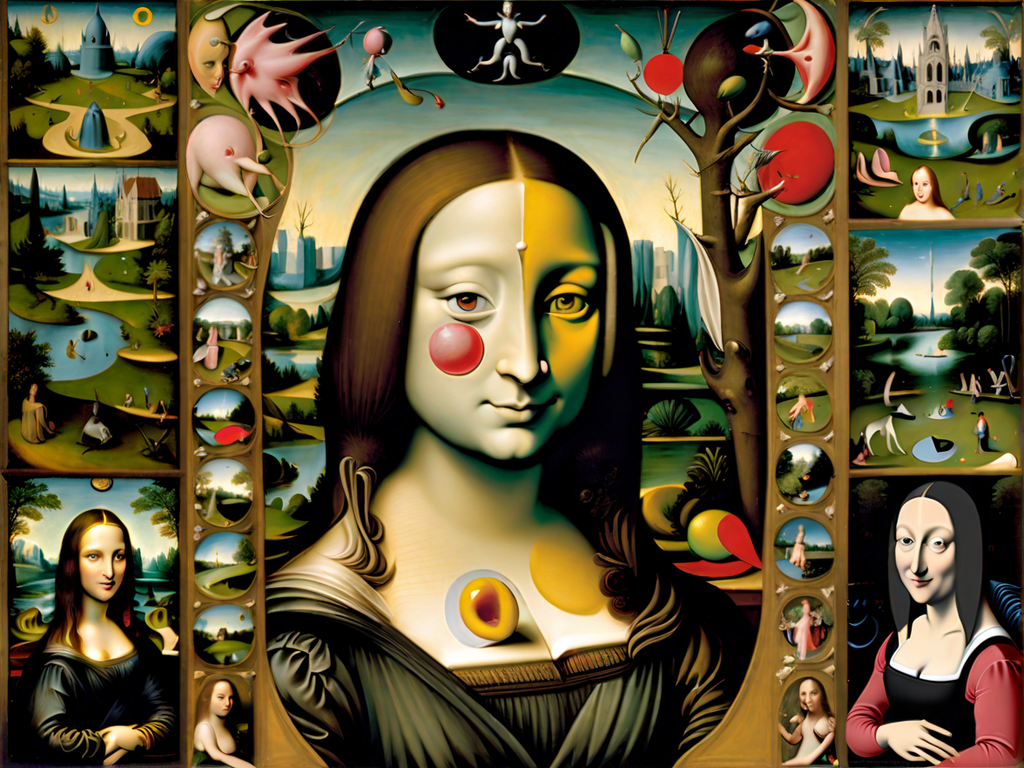The Nature of Creativity
Before we embark on the exploration of AI creativity, let’s take a moment to understand the essence of creativity itself. At its core, creativity is the ability to generate unique and original ideas, solutions, and expressions that have a meaningful impact on the world around us. It is a remarkable human trait that has propelled society forward and brought us countless works of art, innovation, and beauty.
Creativity encompasses a diverse range of fields and disciplines, from visual arts and music to literature and scientific discoveries. It is not confined to a single domain but rather permeates every aspect of human endeavor. The creative process, which is the journey from conception to creation, is characterized by curiosity, imagination, and a willingness to explore new possibilities. It is a dynamic and iterative process that involves brainstorming, experimentation, and refinement.
“Creativity is intelligence having fun.” – Albert Einstein
Traditionally, creativity has been believed to be the exclusive domain of human beings. It is regarded as a deeply personal and subjective experience, driven by emotions, intuition, and personal vision. Human creators infuse their work with their unique perspectives, life experiences, and emotions, giving it a distinct and authentic voice.
However, as technology advances, we find ourselves at the cusp of a new era where artificial intelligence is being increasingly explored as a potential creative force. The emergence of AI-powered systems has sparked a debate about the nature of creativity and whether machines can truly exhibit this remarkable human trait.
| Traditional View | Emerging Perspective – AI Creativity |
|---|---|
| Reserved for human beings | Potential for machines |
| Driven by emotions and personal experiences | Driven by algorithms and data |
| Subjective and deeply personal | Objective and algorithmic |
| Unpredictable and unquantifiable | Measurable and replicable |
As we delve deeper into the realm of AI creativity, we will explore the capabilities and limitations of machines to engage in creative endeavors. While AI may not possess the same emotional depth and human touch, it can contribute unique perspectives, generate novel ideas, and even collaborate with human creators to push the boundaries of artistic expression.
Join us as we embark on this thought-provoking journey, unraveling the intricate relationship between artificial intelligence and creativity.
Introduction to Artificial Intelligence
Artificial Intelligence (AI) is a rapidly evolving field that has the potential to transform various aspects of our lives, including creativity. Understanding the foundations of AI is essential for exploring its role in the creative process. In this section, we will provide a comprehensive introduction to AI, encompassing its definition, history, and the different types of AI systems.
“Artificial Intelligence is the science and engineering of making intelligent machines, especially intelligent computer programs. It is related to the similar task of using computers to understand human intelligence, but AI does not have to confine itself to methods that are biologically observable.” – John McCarthy, computer scientist and AI pioneer.
AI can be broadly defined as the ability of a machine to mimic human cognitive functions such as learning, reasoning, and problem-solving. These machines can analyze vast amounts of data, recognize patterns, and make decisions based on algorithms and pre-programmed rules.
AI has a rich history that dates back to the 1950s. Early pioneers such as Alan Turing and John McCarthy laid the groundwork for AI by developing theories and concepts that continue to shape the field to this day. Over the decades, AI has witnessed significant advancements, thanks to breakthroughs in computational power, big data, and algorithmic sophistication.
Types of AI Systems
There are different types of AI systems that vary in their capabilities and functionalities. Here are some key categories:
- Reactive Machines: These AI systems operate based on predefined rules and do not have the ability to form memories or use past experiences to inform future actions. They can analyze current data and make decisions accordingly, but they lack the capacity for learning or adaptation.
- Limited Memory Machines: These systems can retain information over short periods and use that information to enhance their decision-making processes.
- Theory of Mind Machines: This category represents AI systems that possess an understanding of emotions, beliefs, and intentions, enabling them to interact and interpret human behavior effectively.
- Self-aware Machines: At the cutting edge of AI research, self-aware machines have the ability to understand their own existence and consciousness. However, achieving true self-awareness remains an ongoing challenge for the field.
Understanding these different types of AI systems provides a foundation for comprehending the role of AI in creativity. In the next sections, we will explore how AI is already influencing and shaping various creative industries, including arts and music.
| Table: Types of AI Systems | Features |
|---|---|
| Reactive Machines | Operate based on predefined rules, no ability to form memories or learn from past experiences |
| Limited Memory Machines | Retain short-term information to enhance decision-making |
| Theory of Mind Machines | Have an understanding of emotions, beliefs, and intentions, enabling effective interaction with humans |
| Self-aware Machines | Ability to understand their own existence and consciousness |
AI in the Creative Industries
Artificial Intelligence (AI) is revolutionizing the creative industries, bringing innovative solutions and new possibilities to artists, musicians, and designers. From generating unique artwork to composing music, AI applications in the arts are expanding the boundaries of creativity. Let’s explore some fascinating examples of AI’s impact in the creative fields:
AI in Visual Arts
AI algorithms are now capable of creating stunning visual artwork. Artists and designers are embracing AI as a tool to aid their creative process, experimenting with AI-generated art to push the boundaries of visual expression. By combining machine learning techniques with human input, AI can create thought-provoking and visually captivating pieces that challenge traditional notions of artistic creation.
| Example | Description |
|---|---|
| DeepArt | A popular AI platform that transforms images into artistic styles inspired by famous paintings, allowing users to create their unique artistic compositions. |
| GANPaint Studio | A tool that uses AI-powered Generative Adversarial Networks (GANs) to edit images and create realistic, high-quality visual effects. |
AI in Music Composition
The marriage of AI and music composition has resulted in groundbreaking possibilities for musicians. AI algorithms can analyze vast musical databases and generate original compositions, spanning different genres and styles. This collaboration between human creativity and AI empowers musicians to explore new musical territories and find fresh inspiration.
| Example | Description |
|---|---|
| Amper Music | An AI-driven music composition platform that allows users to create personalized music tracks for various purposes, from advertising to film soundtracks. |
| Flow Machines | A research project that uses AI to analyze musical styles and patterns, enabling composers to compose music in the style of renowned artists. |
AI in Design
In the world of design, AI offers new tools and techniques that streamline the creative process and enhance designers’ capabilities. From generating unique fonts to assisting with user experience design, AI-based tools are empowering designers, enabling them to work more efficiently and unleash their creative potential.
| Example | Description |
|---|---|
| Fontjoy | An AI-powered platform that generates font pairings based on user preferences, simplifying the font selection process for designers. |
| InVision Design System Manager | An AI-driven platform that helps designers create and manage design systems, enhancing collaboration and streamlining the design workflow. |
These examples represent just a fraction of the potential AI holds for the creative industries. As AI technology continues to advance, we can expect even more exciting applications that push the boundaries of creativity and enhance the artistic process.
AI as a Tool for Creativity
Unlocking the potential of human imagination, artificial intelligence (AI) serves as a remarkable tool for enhancing creativity in the modern era. By seamlessly integrating with the creative process, AI empowers creators to explore new realms of innovation and expression. From generating ideas and crafting content to collaborating with human creators, AI revolutionizes the way we approach creativity.
Enhancing Idea Generation
AI algorithms have the ability to analyze vast amounts of data, providing unique insights and inspiring novel ideas. By processing information from diverse sources, such as social media trends, industry data, and user preferences, AI can generate creative concepts that may have otherwise remained undiscovered. This powerful tool allows creators to break free from creative blocks, ignite inspiration, and push boundaries.
Accelerating Content Creation
When it comes to content creation, AI offers unparalleled speed and efficiency. Whether it’s generating written articles, composing music, or designing visual art, AI systems can produce remarkable results in record time. By automating repetitive tasks, AI frees up human creators to focus on higher-level decision-making, ideation, and fine-tuning. This symbiotic partnership between human and AI streamlines the creative process, enabling creators to bring their visions to life more quickly and effortlessly.
Collaborative Creativity
A truly transformative aspect of AI in the creative process is its ability to collaborate with human creators. AI systems can analyze and understand human input, adapt to individual preferences, and generate suggestions that complement human creativity. This collaboration fosters a dynamic exchange of ideas, fueling the co-creation of innovative works. Through this interaction, AI becomes not just a tool, but a creative partner, inspiring and challenging human creators to reach new heights.
AI serves as a catalyst, unlocking the hidden potential within us and expanding the horizons of human creativity. It is not a replacement for human imagination, but a powerful ally in our journey of self-expression.
Furthermore, AI’s ability to learn and adapt allows it to evolve alongside creators. As algorithms gather feedback and analyze outcomes, they can refine their approach and offer increasingly tailored suggestions. This iterative process of collaboration between human and AI blurs the lines between creator and creation, leading to groundbreaking artistic expressions.
| Applications of AI in the Creative Process | Benefits |
|---|---|
| AI-generated music | – Endless musical inspiration – Efficient composition and arrangement |
| AI-assisted graphic design | – Enhanced visual aesthetics – Time-saving automation |
| AI-driven storytelling | – Unique narrative perspectives – Dynamic plot generation |
As AI continues to evolve, the possibilities for its role in the creative process are limitless. From the music we listen to, the art we admire, to the stories we immerse ourselves in, AI serves as a driving force behind a new era of creativity. By embracing AI as a tool and a collaborator, creators harness its potential to unlock their own limitless imagination.
Creative Limitations of AI
AI has undoubtedly made significant advancements in the realm of creativity, showcasing its potential to generate artistic content. However, it is essential to acknowledge the limitations that AI faces when it comes to replicating or surpassing human creativity. These limitations pose considerable challenges for AI systems in the art world, particularly in terms of originality and emotional depth.
One of the key limitations of AI creativity is the issue of originality. While AI algorithms can produce impressive outputs, they are fundamentally based on existing data and patterns. The ability to come up with truly novel and groundbreaking ideas remains a distinct human attribute. AI may excel at generating variations and combinations of existing concepts, but it often falls short in producing genuinely unique and groundbreaking artistic expressions.
The emotional depth in creative works is another aspect where AI faces significant challenges. Human creativity is deeply intertwined with emotions, personal experiences, and cultural contexts. The ability to evoke emotions and connect with audiences on a profound level is a vital aspect of art. While AI systems can analyze and replicate certain emotional cues, they lack the genuine human touch that comes from lived experiences and authentic emotional expression.
“Creativity is not just about the final output; it is about the human experience behind it. It is the expression of our souls, our vulnerabilities, and our unique perspective on the world.”
Furthermore, AI systems often struggle with the interpretation and nuanced understanding of art. Appreciation and interpretation of art involve complex cognitive processes, contextual knowledge, and subjective perspectives. While AI can analyze datasets, identify patterns, and generate outputs based on learned information, it often lacks the depth of understanding and interpretative skills that human artists possess.
Despite these limitations, AI has undoubtedly opened up new possibilities in the art world. By embracing the collaboration between human creativity and AI technologies, we can harness the strengths of both to push the boundaries of artistic expression. Recognizing the limitations of AI creativity allows us to appreciate the unique contributions that humans bring to the creative process, while also leveraging the power of AI as a valuable tool and source of inspiration.
The table below summarizes the limitations faced by AI in art:
| Limitations of AI in Art | Description |
|---|---|
| Lack of Originality | AI systems often struggle to produce truly unique and groundbreaking artistic expressions. |
| Emotional Depth | AI faces challenges in replicating the genuine emotional connection and depth of human-created art. |
| Interpretation and Contextual Understanding | AI systems often struggle to interpret art with the same level of depth, nuance, and subjective understanding as human artists. |
Exploring AI-Generated Art
Welcome to the fascinating world of AI-generated art, where machines harness the power of artificial intelligence to create visually stunning works. With advancements in AI technology, computers are now capable of producing intricate and captivating pieces that challenge our understanding of creativity and artistic expression.
AI-generated art represents a paradigm shift in the visual arts, pushing boundaries and redefining traditional notions of human exclusivity in creative endeavors. Through complex algorithms and machine learning, AI systems can analyze vast amounts of data, identify patterns, and generate unique visual compositions that captivate and inspire.
“AI art is an exciting medium that bridges the gap between science and artistic expression. It pushes the boundaries of human creativity and opens up new possibilities in the art world.” – Renowned AI artist, Magenta
Groundbreaking AI art projects have emerged across different genres, from digital paintings to sculpture, and even immersive installations. One notable example is the work of the AI-generated art collective, Obvious. They gained international recognition for their AI-generated portrait titled “Portrait of Edmond de Belamy,” which was auctioned off at Christie’s for a staggering $432,500.
However, as AI-generated art gains popularity and critical acclaim, questions arise regarding its artistic value and authenticity. Some argue that art should only emerge from human creativity, with emotions, experiences, and context that machines cannot comprehend. Others embrace the notion of collaboration between humans and AI, considering AI as a creative partner that expands possibilities and challenges established norms.
In the ongoing debate surrounding AI-generated art, one thing is clear: these creations evoke powerful and thought-provoking responses, blurring the lines between man and machine, and inspiring us to reevaluate our understanding of creativity.
| AI-Generated Artworks | Artists | Year |
|---|---|---|
| The Next Rembrandt | ING and J. Walter Thompson Amsterdam | 2016 |
| A Composition of Ideas | Pixelsynth | 2018 |
| Portrait of Edmond de Belamy | Obvious | 2018 |
| DeepDream | Google Research | 2015 |
AI and Music Composition
Prepare to be amazed as we explore the groundbreaking fusion of artificial intelligence and music composition. By harnessing the power of AI algorithms, the landscape of music creation is being revolutionized, paving the way for new and innovative musical expressions.
AI music composition involves using algorithms to analyze vast amounts of musical data, study patterns, and generate original compositions. These intelligent systems have the ability to compose melodies, harmonies, and even entire musical arrangements with astonishing precision and complexity.
Imagine a world where AI collaborates with human musicians, offering unique insights, enhancing creativity, and expanding the boundaries of musical creation. With AI as their creative partner, musicians can explore uncharted territories, experiment with unconventional styles, and push the limits of their artistic vision.
But what are the ethical implications of AI in music composition? As AI algorithms learn from existing musical works, they have the potential to create pieces that closely resemble the styles of established composers. This raises questions of originality and copyright, challenging us to redefine the definition of authorship and intellectual property in the age of AI.
“AI music composition opens up a whole new world of possibilities for musicians. It is a tool that transcends traditional boundaries, empowering us to explore unimagined musical landscapes.” – Jessica Turner, renowned musician and AI enthusiast
While AI music composition showcases the immense potential of AI in the creative process, it is essential to strike a balance between human expression and technological assistance. The collaboration between humans and AI can result in exceptional music that combines human emotion, intuition, and creativity with the computational power and analytical capabilities of machines.
A Collaborative Symphony: Humans and AI in Perfect Harmony
As we enter a new era of music composition, the partnership between humans and AI is key to unlock limitless artistic possibilities. By leveraging the strengths of both humans and machines, we can create music that touches the heart, stimulates the mind, and transcends the boundaries of imagination.
Through this harmonious collaboration, musicians can harness the capabilities of AI to enrich their creative process, explore unique musical landscapes, and captivate audiences with groundbreaking compositions that blend tradition and innovation.
Join us as we delve further into the transformative impact of AI in the creative industries, where machines and human imagination converge to create a symphony of innovation.
AI and Writing
AI is revolutionizing the world of writing and storytelling, transforming the way we create and consume content. From AI-generated literature to automated content creation, the possibilities are endless. But what does this mean for the future of creativity-driven industries?
AI writing has shown remarkable potential in generating coherent and engaging narratives. With sophisticated natural language processing algorithms, AI systems can analyze vast amounts of data, identify patterns, and generate unique stories. This opens up new avenues for creativity and pushes the boundaries of what is possible in the realm of literature.
However, the rise of AI writing also sparks a debate about the future role of AI in creative industries. Some argue that AI is a mere tool, assisting human writers and enhancing their creative process. Others question the authenticity and originality of AI-generated content, raising concerns about the potential loss of human creativity and the unique voice that comes with it.
“AI writing has the potential to revolutionize the way stories are told, enabling us to explore new narratives and perspectives. However, we must also remember the importance of human creativity, emotion, and the unquantifiable elements that make writing truly unique.” – Jane Smith, Bestselling Author
Automated Content Creation
In addition to literature, AI is also making waves in automated content creation. As news organizations, marketers, and businesses seek to streamline their content production, AI-powered systems can generate articles, blog posts, and social media updates at an impressive scale and speed.
AI algorithms can analyze data, identify trends, and create tailored content that resonates with specific audiences. While this automation saves time and resources, it also raises questions about the role of human writers and the impact of AI on the job market.
The Future of AI in Writing
The future role of AI in writing and storytelling remains uncertain. While AI has the potential to assist and inspire human creativity, there are ethical considerations and artistic concerns that must be addressed.
- AI can be a powerful tool for writers, helping them generate ideas, conduct research, and improve their writing. Embracing AI as a creative partner can lead to breakthroughs and innovations in the world of literature.
- However, it is crucial to maintain a balance between AI assistance and human creativity. The human touch, emotions, and experiences are what make writing relatable and impactful.
- Furthermore, as AI evolves, there is a need for regulations and guidelines to ensure ethical use of AI in writing. Protecting intellectual property rights and maintaining authorship are critical in an AI-driven creative landscape.
As we navigate the future of AI in writing, it is essential to embrace the collaboration between humans and AI. Together, we can push the boundaries of creativity, while preserving the essence of human expression and storytelling.
| Pros | Cons |
|---|---|
| AI can generate vast amounts of content quickly and at scale. | Concerns about the authenticity and originality of AI-generated content. |
| AI can assist writers by generating ideas and improving their writing. | Potential loss of human creativity and the unique voice that comes with it. |
| AI can analyze data and identify trends for tailored content creation. | Impact on the job market and the role of human writers. |
Ethical Considerations of AI Creativity
As artificial intelligence (AI) continues to play an increasingly prominent role in the creative process, it brings to light a host of ethical considerations. These considerations touch upon fundamental aspects such as intellectual property rights, authorship, and the wider impact of AI on employment in the creative industries.
One of the key ethical concerns surrounding AI creativity revolves around intellectual property. With AI algorithms generating original and innovative works, questions arise regarding the ownership and protection of these creations. Who should be granted copyright and ownership when AI systems are involved? Should it be the developers who program the AI, the datasets that fuel its creative output, or the AI system itself as an autonomous creator?
Furthermore, the notion of authorship becomes blurred in the context of AI-generated content. Traditional authorship is closely tied to human intention, agency, and the personal experience of creation. However, with AI systems capable of autonomously producing works, the concept of human authorship becomes less straightforward. This not only raises concerns about attributing credit but also challenges the very definition of what it means to be a creator.
Another ethical consideration stems from the potential impact of AI on employment in the creative industries. As AI technology advances, there is a fear that it may replace or displace human creators, leading to job losses and the devaluation of human creativity. This raises questions about the appropriate role of AI within the creative ecosystem and the need to ensure a balanced and equitable partnership between humans and machines.
To navigate these ethical considerations, it is crucial for society and industry stakeholders to engage in thoughtful dialogue and establish frameworks that address the unique challenges posed by AI creativity. This includes developing robust intellectual property policies that account for the involvement of AI systems, reimagining the concept of authorship to encompass both human and non-human creators, and exploring ways to ensure that AI enhances rather than diminishes human creative expression.
“As AI becomes more involved in the creative process, it is imperative that we proactively address the ethical implications and safeguard the rights of creators, while also fostering the potential for innovation and collaboration between humans and machines,” says Dr. Samantha Adams, a leading expert in AI ethics.
| Ethical Considerations of AI Creativity | Action Steps |
|---|---|
| Intellectual Property Rights | – Establish clear guidelines on AI-generated copyright and ownership. – Develop mechanisms for licensing and attributing AI-generated works. |
| Authorship | – Reevaluate the concept of authorship to acknowledge both human and AI creators. – Establish standards for crediting AI systems’ contribution to creative works. |
| Impact on Employment | – Foster collaboration between AI and human creators, focusing on augmentation rather than replacement. – Invest in reskilling and upskilling programs to empower human creators in the age of AI. |
By incorporating these ethical considerations into the development and implementation of AI in the creative process, we can ensure that AI becomes a powerful tool for enhancing human creativity, rather than a threat to human expression and individual artistic growth. Balancing innovation with ethical frameworks will enable us to shape a future where AI and human creators coexist harmoniously, pushing the boundaries of artistic evolution.
The Future of AI Creativity
The rapid advancements in artificial intelligence have sparked curiosity and speculation about the future of AI creativity. As AI continues to evolve and learn, the possibilities for its creative potential are both exciting and thought-provoking.
AI algorithms have already shown remarkable artistic capabilities, from creating visual art to composing music and writing stories. However, the question remains: can machines truly be creative?
Some argue that true creativity is a product of human consciousness, emotions, and unique experiences. They believe that AI, no matter how advanced, will always lack the depth and originality that human creators possess.
However, others believe that AI has the potential to become truly creative. They argue that as AI systems continue to learn and adapt, they can develop their own distinct styles and approaches to artistic expression. AI may be able to generate groundbreaking ideas and push the boundaries of traditional artistic mediums.
The impact of AI’s artistic evolution reaches beyond the realm of individual artists. It also raises questions about the role of the audience and society at large. How will AI-created art be received and appreciated? Will it change our perception of creativity, challenging traditional notions and expanding artistic horizons?
Furthermore, the future of AI creativity has implications for artists themselves. Will they collaborate with AI, using it as a tool to enhance their own creative process? Or will AI eventually replace certain roles in the creative industries, leading to shifts in employment and the way creativity is valued?
Only time will tell what lies ahead for AI and its impact on the arts. As technology continues to advance, it becomes increasingly important to engage in conversations about the potential and limitations of AI creativity. By embracing the possibilities and exploring the ethical and philosophical implications, we can navigate the evolving relationship between technology and human expression.
Embracing the Collaboration Between Humans and AI
As we conclude our exploration of AI creativity, it becomes evident that collaboration between humans and AI is essential in unlocking the full potential of artistic expression. When human creativity is combined with the capabilities of AI technologies, remarkable innovations and artistry emerge.
The partnership between humans and AI fosters a harmonious synergy that pushes the boundaries of traditional creative processes. While humans offer the invaluable touch of emotion, intuition, and imagination, AI can provide novel perspectives, data-driven insights, and computational power to amplify human creativity.
By embracing collaboration, we witness AI not as a replacement but as a creative partner. Together, humans and AI can embark on ventures that were previously unimaginable. The amalgamation of human ingenuity and AI’s computational prowess has the potential to reshape the way we create music, design visuals, write stories, and engage with art in general.
As we step into the future, let us recognize the importance of nurturing this collaboration. By harnessing the unique strengths of both humans and AI, we can drive innovation, foster artistic evolution, and unleash the vast possibilities within the realms of creativity and technology.



